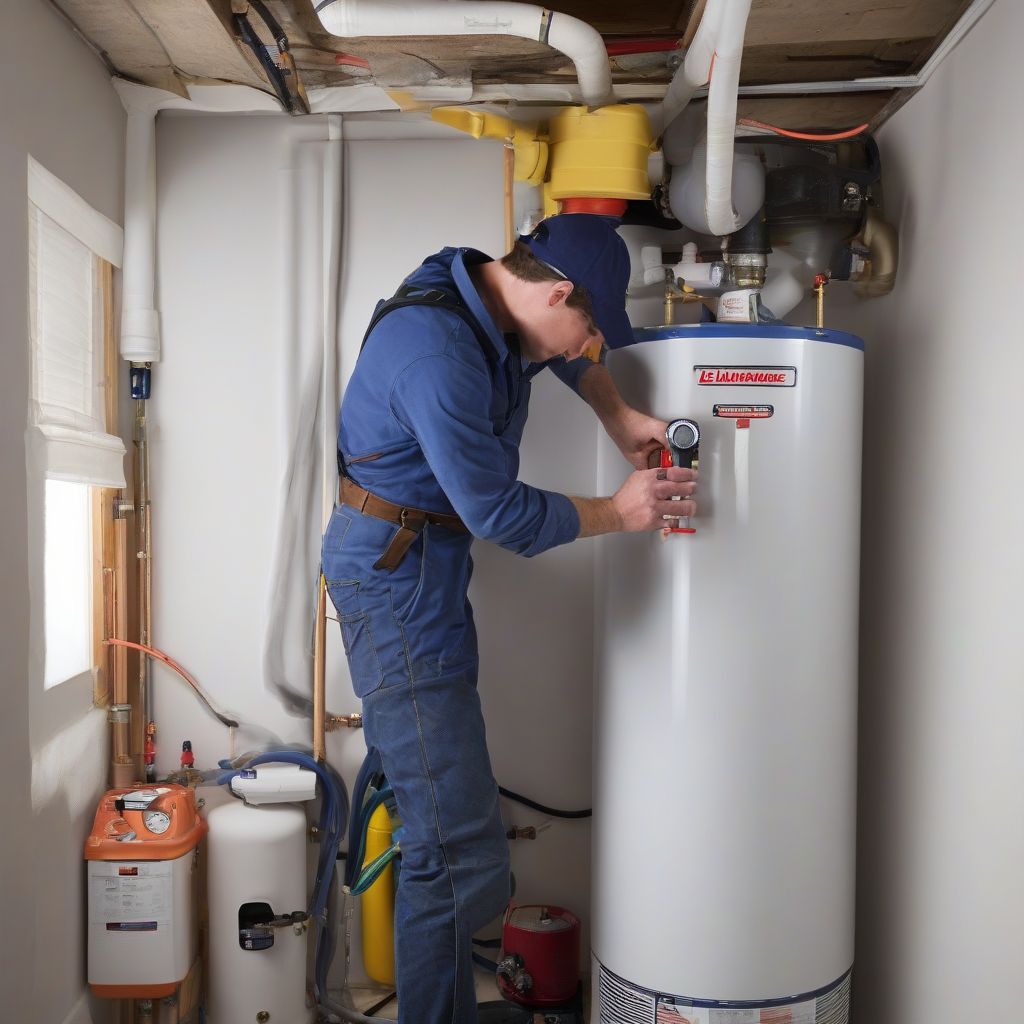Understanding Flush Gas Water Heaters: A Comprehensive Guide
For homeowners seeking reliable and efficient water heating solutions, gas water heaters have long been a popular choice. Among the various types available, Flush Gas Water Heaters stand out as a space-saving and cost-effective option. In this comprehensive guide, we will delve into the intricacies of flush gas water heaters, exploring their functionality, benefits, drawbacks, and key factors to consider before making an informed purchase decision.
What is a Flush Gas Water Heater?
gas.areview.net/wp-content/uploads/2024/09/Flush-Gas-Water-Heater-Installation-66dff0.jpg" alt="Flush Gas Water Heater Installation" width="1024" height="1024">Flush Gas Water Heater Installation
A flush gas water heater, also known as a tankless or on-demand water heater, is a type of water heating system that differs significantly from traditional tank-style units. Unlike their counterparts that store and heat a large volume of water in a tank, flush gas water heaters heat water only when it is needed. This “on-demand” heating process offers several advantages, including energy efficiency, space savings, and an endless supply of hot water.
Flush gas water heaters are typically installed on an exterior wall, directly venting outside, which eliminates the need for bulky vent pipes and allows for installation in tighter spaces. This makes them an ideal choice for homes with limited space, apartments, or areas where traditional tank water heaters may not be feasible.
How Flush Gas Water Heaters Work
Flush gas water heaters employ a straightforward yet highly efficient mechanism to deliver hot water on demand.
- Cold Water Inlet: When a hot water tap is turned on, cold water flows into the unit through the inlet pipe.
- Flow Sensor: A flow sensor within the heater detects the water flow and activates the system.
- Gas Burner: Upon activation, the gas burner ignites, generating intense heat.
- Heat Exchanger: The incoming cold water passes through a heat exchanger, typically made of copper or stainless steel, where it is rapidly heated by the burner’s flames.
- Hot Water Outlet: Once the water reaches the desired temperature, it flows out to the fixture through the hot water outlet.
Advantages of Flush Gas Water Heaters
Flush gas water heaters offer a compelling array of advantages that make them a popular choice for modern homes:
- Energy Efficiency: By heating water only on demand, flush gas water heaters eliminate standby heat loss associated with traditional tank-style units, resulting in significant energy savings and lower utility bills.
- Space Savings: Their compact design and wall-mounted installation allow for optimal space utilization, freeing up valuable floor or closet space.
- Endless Hot Water: Say goodbye to cold showers. Flush gas water heaters provide a continuous flow of hot water, ensuring you never run out, even during peak usage periods.
- Longer Lifespan: With fewer moving parts and no tank to corrode, flush gas water heaters generally have a longer lifespan compared to tank-style units, potentially lasting 15-20 years or more with proper maintenance.
- Reduced Risk of Water Damage: The absence of a large tank eliminates the risk of tank leaks and potential water damage associated with traditional water heaters.
Disadvantages of Flush Gas Water Heaters
While flush gas water heaters offer numerous benefits, it’s essential to consider their limitations:
- Higher Upfront Cost: Flush gas water heaters typically have a higher initial purchase and installation cost compared to traditional tank-style units.
- Limited Flow Rate: The flow rate of flush gas water heaters, measured in gallons per minute (GPM), can impact the number of fixtures that can be used simultaneously. Homes with high hot water demands may require a larger unit or multiple heaters.
- Gas Connection Required: As their name suggests, flush gas water heaters require a gas connection, which may not be feasible in all homes.
- Potential for Delayed Ignition: In some cases, there might be a slight delay in hot water delivery, particularly if the heater is located far from the fixture in use.
Factors to Consider Before Buying a Flush Gas Water Heater
Choosing the right flush gas water heater involves considering several factors:
- Sizing: Determine the appropriate size based on your household’s hot water demands, considering the number of bathrooms, appliances, and peak usage patterns.
- Flow Rate (GPM): Evaluate the unit’s flow rate to ensure it meets your household’s needs.
- Energy Efficiency (EF): Look for models with a high Energy Factor (EF) rating, which indicates greater energy efficiency.
- Venting Options: Determine the appropriate venting configuration based on your home’s layout and local building codes.
- Warranty: Consider the warranty offered by the manufacturer, which can vary in terms of coverage and duration.
Conclusion
Flush gas water heaters offer an efficient and space-saving solution for providing on-demand hot water in residential applications. By understanding their functionality, advantages, and drawbacks, homeowners can make informed decisions when considering a flush gas water heater for their needs. While the initial investment may be higher, the long-term benefits of energy savings, endless hot water, and increased lifespan make flush gas water heaters a compelling choice for modern living.
